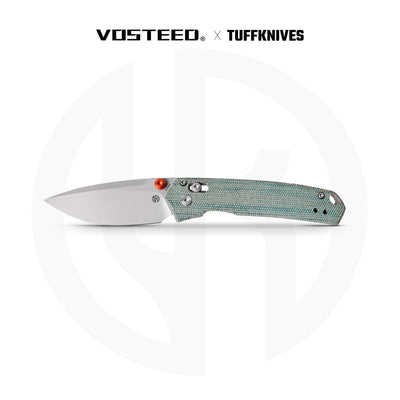Unlock the Secret to Choosing the Ultimate Pocket Knife You'll Never Regret!
In a world where versatility and functionality are paramount, having a reliable pocket knife can be a game changer. Whether you're hiking in the great outdoors, tackling everyday tasks at home, or simply need a handy tool for unexpected situations, a pocket knife offers unparalleled utility. It’s not just a tool; it’s a companion that can assist you in a multitude of scenarios, from opening packages to preparing food. This article is designed to guide you through the process of selecting the best pocket knife tailored to your unique needs and lifestyle, ensuring that you make an informed and satisfying purchase.

Understanding Pocket Knives
At its core, a pocket knife is a small folding knife that is easy to carry in your pocket, typically featuring one or more blades that can be opened and closed with a simple mechanism. These knives are incredibly versatile, serving a wide range of purposes such as cutting, slicing, and even performing minor repairs. There are two primary styles of pocket knives: folding knives and fixed blades. Folding knives have blades that retract into the handle for safety and portability, making them ideal for everyday carry. On the other hand, fixed blades are sturdier and often preferred for tasks that require more strength and stability. Understanding the basic types of pocket knives will help you appreciate the variety available and find one that aligns with your specific needs.
Key Features to Consider
When it comes to choosing the best pocket knife, several essential features should be at the forefront of your decision-making process. First and foremost is the blade material, as it directly impacts the knife's durability and sharpness retention. Stainless steel is popular for its resistance to rust and corrosion, while high-carbon steel offers superior sharpness but requires more maintenance to prevent rust. The type of blade is also crucial; options include drop point, clip point, and tanto, each serving different purposes with unique advantages. The handle material plays an equally important role in the knife's grip and aesthetic appeal. Common materials include plastic, wood, and metal, each providing different levels of comfort and durability. Lastly, consider the size and weight of the knife, as these factors influence portability and ease of use.
Blade Types
Understanding the various blade types is essential for selecting a pocket knife that suits your needs. The drop point blade features a convex curve and a lowered point, making it versatile for various cutting tasks, particularly in outdoor settings. The clip point blade, characterized by its sharp point, excels in precision tasks and is often favored by hunters. Meanwhile, the tanto blade, with its strong tip and angular design, is designed for piercing and heavy-duty tasks. Each blade type has its strengths, so consider what activities you’ll primarily be using your knife for when making your choice.
Handle Materials
The handle of the pocket knife is just as important as the blade, influencing both grip and overall durability. Plastic handles are lightweight and often come in various colors, making them appealing for casual users. Wooden handles provide a classic look and feel, offering a comfortable grip but may require more care to maintain their appearance. Metal handles, while heavy-duty and durable, can feel cold and may slip if wet. Ultimately, it’s vital to choose a handle material that feels good in your hand and matches your intended usage.
Choosing the Right Size
The size of your pocket knife greatly impacts its usability and portability. A smaller knife may be more convenient for everyday carry, easily fitting into your pocket without bulk, while a larger knife can provide more robust functionalities for serious outdoor tasks. When selecting the right size, consider your intended use: if you plan to use the knife for intricate tasks, a smaller blade may be best. Conversely, if you expect to tackle heavier tasks like camping or woodworking, a larger knife could be more advantageous. Personal preference also plays a significant role; choose a size that feels comfortable and manageable in your hand.
Legal Considerations
Before making a purchase, it’s crucial to be aware of the legal considerations surrounding carrying pocket knives in your region. Laws can vary significantly, with some areas imposing restrictions on blade length or type, while others may have specific regulations regarding concealed carry. Familiarizing yourself with local laws ensures that you comply with regulations and avoid potential legal issues. Always do your research and, when in doubt, consult local authorities or legal resources to understand what is permissible in your area.
Making an Informed Choice
As we’ve explored, choosing the best pocket knife involves careful consideration of various factors including blade type, handle materials, size, and legal implications. Each of these elements contributes to a knife that not only meets your practical needs but also reflects your personal style and preferences. Take your time in evaluating your options, as the right pocket knife can become an invaluable tool in your everyday life. Remember, the best pocket knife is one that fits seamlessly into your lifestyle and enhances your ability to tackle any task that comes your way.





